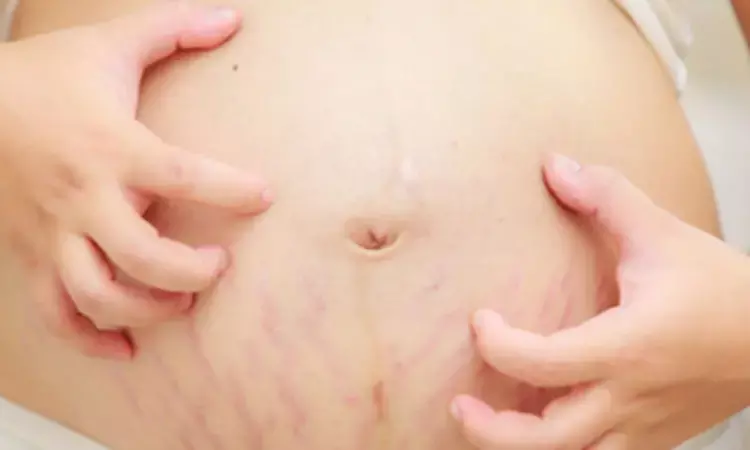- Home
- Medical news & Guidelines
- Anesthesiology
- Cardiology and CTVS
- Critical Care
- Dentistry
- Dermatology
- Diabetes and Endocrinology
- ENT
- Gastroenterology
- Medicine
- Nephrology
- Neurology
- Obstretics-Gynaecology
- Oncology
- Ophthalmology
- Orthopaedics
- Pediatrics-Neonatology
- Psychiatry
- Pulmonology
- Radiology
- Surgery
- Urology
- Laboratory Medicine
- Diet
- Nursing
- Paramedical
- Physiotherapy
- Health news
- Fact Check
- Bone Health Fact Check
- Brain Health Fact Check
- Cancer Related Fact Check
- Child Care Fact Check
- Dental and oral health fact check
- Diabetes and metabolic health fact check
- Diet and Nutrition Fact Check
- Eye and ENT Care Fact Check
- Fitness fact check
- Gut health fact check
- Heart health fact check
- Kidney health fact check
- Medical education fact check
- Men's health fact check
- Respiratory fact check
- Skin and hair care fact check
- Vaccine and Immunization fact check
- Women's health fact check
- AYUSH
- State News
- Andaman and Nicobar Islands
- Andhra Pradesh
- Arunachal Pradesh
- Assam
- Bihar
- Chandigarh
- Chattisgarh
- Dadra and Nagar Haveli
- Daman and Diu
- Delhi
- Goa
- Gujarat
- Haryana
- Himachal Pradesh
- Jammu & Kashmir
- Jharkhand
- Karnataka
- Kerala
- Ladakh
- Lakshadweep
- Madhya Pradesh
- Maharashtra
- Manipur
- Meghalaya
- Mizoram
- Nagaland
- Odisha
- Puducherry
- Punjab
- Rajasthan
- Sikkim
- Tamil Nadu
- Telangana
- Tripura
- Uttar Pradesh
- Uttrakhand
- West Bengal
- Medical Education
- Industry
Maternal tenofovir along with Vaccination may prevent Vertical Hepatitis B transmission

In babies, a combination of hepatitis B vaccination and immunoglobulin is the cornerstone of vertical transmission prevention for women who are positive for both hepatitis B surface and envelope antigens, says an article published in American Journal of Obstetrics & Gynecology.
This study was carried out by Ha T. Nguyen and colleagues to examine the efficiency and safety of pharmaceutical therapies to prevent vertical transmission of the hepatitis B virus.
Cochrane, Medline, and Scopus databases were searched for this study up to October 28th, 2020. All randomized controlled studies that reported vertical hepatitis B viral transmission with pharmaceutical intervention were properly searched and included in the analysis. The Cochrane Risk-of-Bias tool Version 2 was used to assess the risk of bias. The effectiveness of the treatment was calculated using a stratified network meta-analysis which was based on maternal hepatitis B envelope antigen status.
The results of this study stated as follow:
1. There were 19 studies that involved moms who tested positive for hepatitis B surface and envelope antigens.
2. The combination of hepatitis B vaccination and immunoglobulin in babies lowered transmission risk much more than the vaccine alone, with a risk ratio of 0.52. (95% confidence interval 0.30, 0.91).
3. With a pooled risk ratio of 0.10, only the inclusion of maternal tenofovir disoproxil fumarate, but not telbivudine, lamivudine, or maternal hepatitis B immunoglobulin, further lowered transmission risk in newborns compared to a combination of hepatitis B vaccination and hepatitis B immunoglobulin.
4. Twelve studies in mothers with hepatitis B surface antigen positivity but mixed, unknown, or negative hepatitis B envelope antigen status provided limited evidence that maternal hepatitis B immunoglobulin combined with hepatitis B vaccine and immunoglobulin in infants was the likely best treatment, but this failed to reach statistical significance when compared to a combination of hepatitis B vaccine and immunoglobulin in infants.
5. Similarly, adding newborn hepatitis B immunoglobulin to immunization gives potential extra benefit but fails to attain statistical significance.
In conclusion, the inclusion of maternal tenofovir in this newborn combination regimen was thought to be the most probable successful therapy. No further agents offered extra benefit beyond the hepatitis B vaccination alone for newborns of women with hepatitis B surface antigen positivity and mixed, unknown, or negative hepatitis B envelope antigen status.
Reference:
Nguyen, H. T., Thavorncharoensap, M., Phung, T. L., Anothaisintawee, T., Chaikledkaew, U., Sobhonslidsuk, A., Talungchit, P., Chaiyakunapruk, N., Attia, J., McKAY, G. J., & Thakkinstian, A. (2022). Comparative efficacy and safety of pharmacological interventions to prevent Mother-to-Child transmission of hepatitis B virus: A systematic review and network meta-analysis. In American Journal of Obstetrics and Gynecology. Elsevier BV. https://doi.org/10.1016/j.ajog.2022.02.042
Keywords: Hepatitis B, Vaccine, immunization, immunoglobulin, antigen, vertical transmission, tenofovir, American Journal of Obstetrics and Gynecology
Medical Dialogues consists of a team of passionate medical/scientific writers, led by doctors and healthcare researchers. Our team efforts to bring you updated and timely news about the important happenings of the medical and healthcare sector. Our editorial team can be reached at editorial@medicaldialogues.in.
Dr Kamal Kant Kohli-MBBS, DTCD- a chest specialist with more than 30 years of practice and a flair for writing clinical articles, Dr Kamal Kant Kohli joined Medical Dialogues as a Chief Editor of Medical News. Besides writing articles, as an editor, he proofreads and verifies all the medical content published on Medical Dialogues including those coming from journals, studies,medical conferences,guidelines etc. Email: drkohli@medicaldialogues.in. Contact no. 011-43720751


